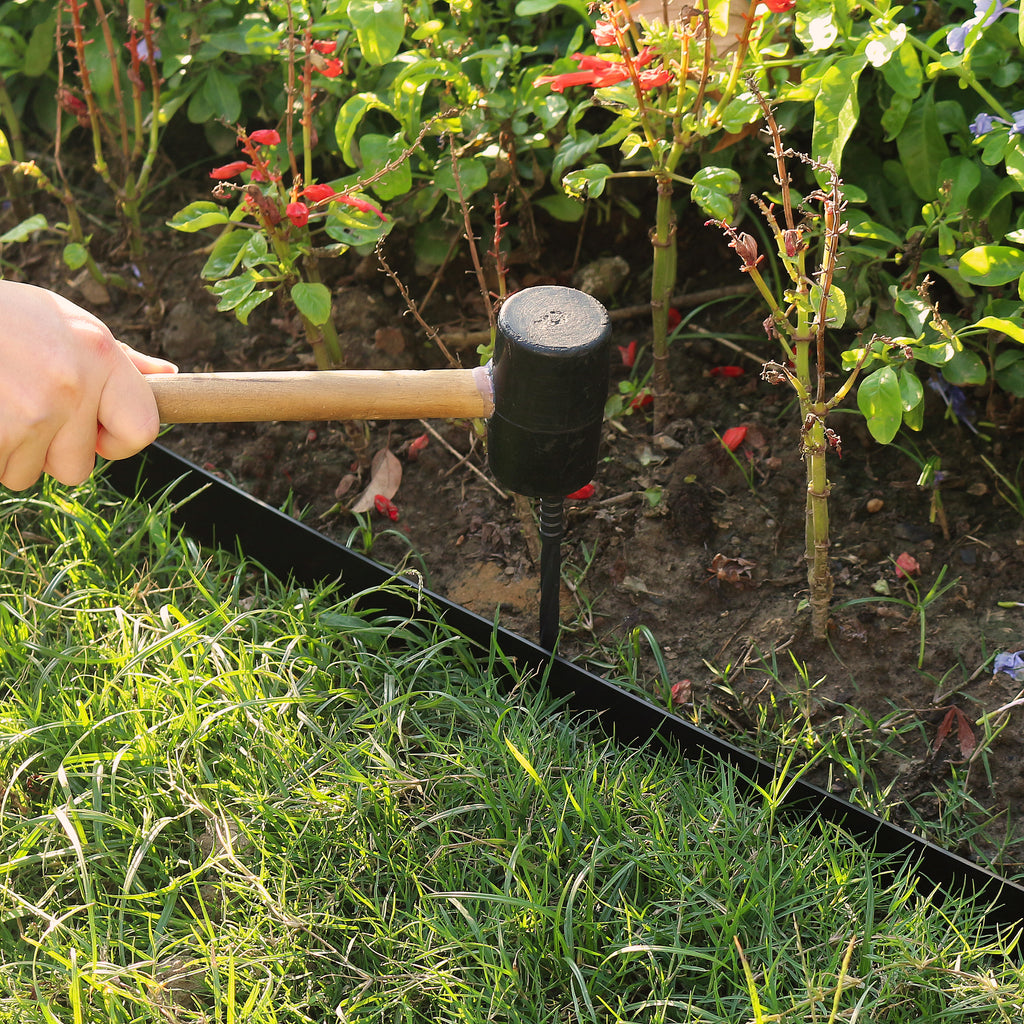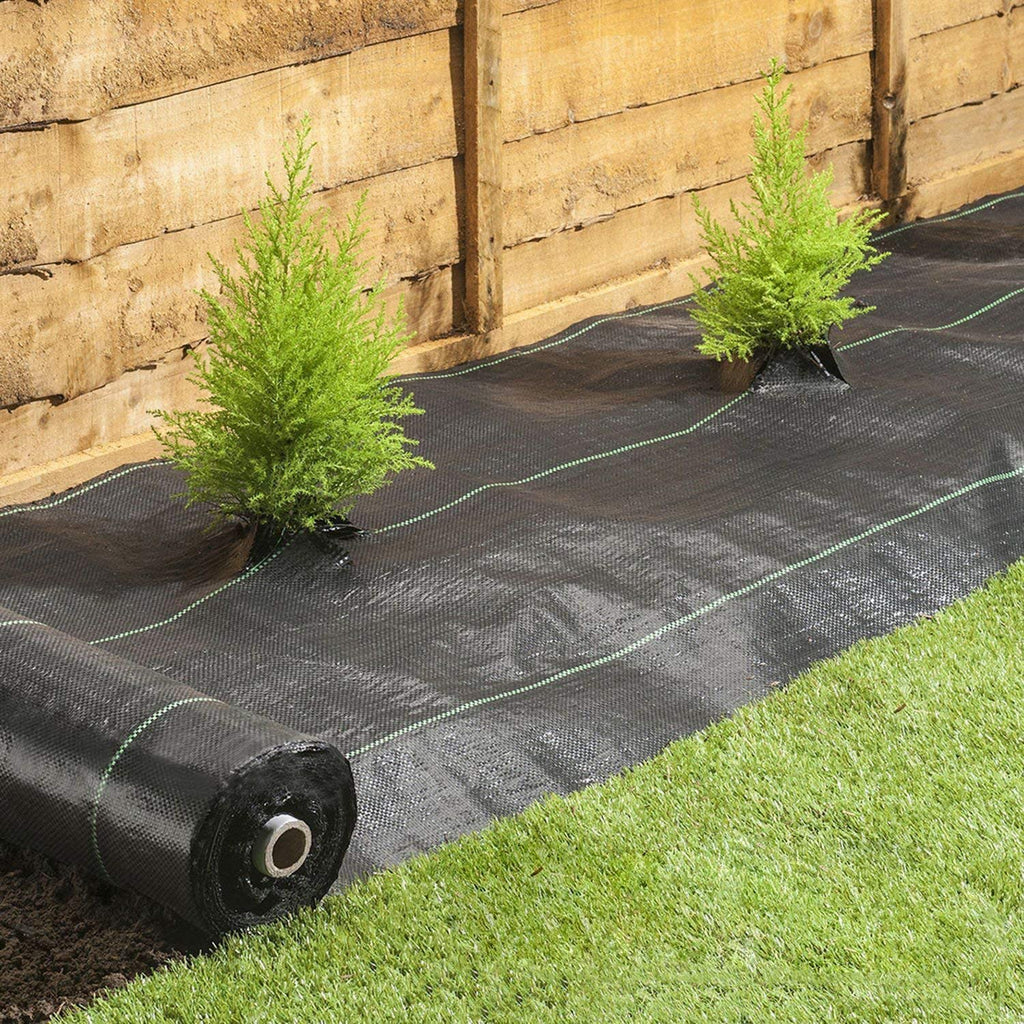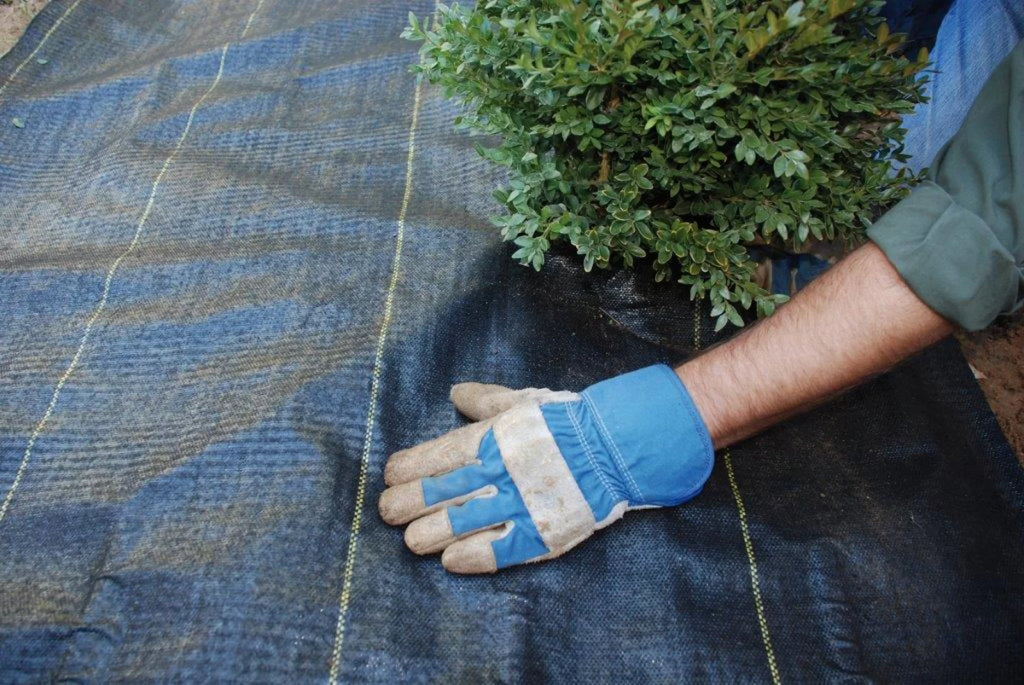
Every act of gardening seems to involve at least one act of weeding. Weeding isn’t anyone’s favorite garden chore, and anything we can do to make it easier or avoid it altogether is good. Blocking the growth of weeds is thus a longtime goal of gardeners everywhere—it’s one of the reasons we use mulch, after all. More recently the focus has shifted to weed barrier and landscape fabric—long rolls of flexible, fabric-like material that lies on top of the soil and prevents weeds from growing. So how does weed barrier work? What can weed barrier do in your garden? What’s the difference between landscape fabric and weed barrier? Let’s dig in!
Let’s start with some definitions, just so we’re sure what we’re talking about. “Weed”, as always, means a plant growing where you don’t want it to. There are no bad plants, there are just plants that are in the wrong place! While there’s technically a difference between weed barrier and landscaping fabric, we’ll be using those terms interchangeably. “Weed barrier” generally refers to a lighter product designed for use around vegetable plants, and “landscaping fabric” is a heavy-duty version designed to block weeds around permanent landscaping. So, which one do you need? Don’t worry, we’ll help you figure that out.
The basics of using weed barrier/landscape fabric are, well, basic! While different manufacturers may have different guidelines for their particular products—and you should follow those!—the basics of using weed barrier go something like this. First, clear all weeds, old mulch, and debris from the area you’d like to cover with weed barrier. This helps ensure that there’s nothing to poke through your newly laid weed barrier, causing a hole, tear, or other damage. There’s an optional second step for vegetable gardens: you can till in some compost or fertilizer and then water thoroughly to help the nutrients enrich the soil. Next, you’ll lay your weed barrier over the area you wish to cover, with some overlap so you can tuck the edges under or between the soil and whatever edging material you’ve chosen. Spread the weed barrier or landscaping fabric relatively tightly—for landscaping installations you may want to use landscaping fabric stakes or staples to hold it in place. Double check that your edging is installed correctly and that everything looks tight and completely covered, and you’re done with the installation!

One the weed barrier/landscaping fabric is in place, you can now plant whatever vegetable plants, shrubs, seedlings, or saplings are going into your space. You generally do this by cutting an X-shaped slit in the fabric, and then planting as you normally would. Again, when in doubt read the instructions and follow them! After you’ve planted, now’s the time to cover the area with a thick layer of mulch. This helps with both appearance and with water retention and soil temperature. After that, you can just water normally—most of these barriers are water-permeable.

Many commercially available weed barriers or landscaping fabrics are made of a plastic or other synthetic material. We know that many of our readers prefer to avoid using such materials in their gardens, particularly their vegetable gardens. We also know that some of you like to explore DIY options, re-purposing other materials to do the job instead of buying something new. The good news is that Gardzen has some options for you! Most garden centers carry various kinds of biodegradable, environmentally safe weed barrier and landscaping fabric. Some of these products are made of paper, some are made of a woven material made from jute or coconut, but in any event they offer an environmentally friendly, organic option for your garden. Just make sure to read the labels and get the right product for your needs. For the DIYers among you, old cardboard boxes and paper grocery bags can do the job quite well in a vegetable garden—just don’t expect them to last much more than a season or so! However, they are cheap or even free, and easy to use. Just make sure that any DIY, re-purposed weed barrier materials are clean and have not be exposed to anything that isn’t food-safe.

Weed barrier and landscaping fabric are wonderful things. They make gardening a bit easier by cutting down on one of the our least-favorite garden chores, and they can enhance the beauty of your space. If you’ve never used weed barrier or landscape fabric before, give them a try and let us know how it works for you. If you’ve got some experience using these products in your garden, please give us your tips and tricks—we love to hear from you!

Leave a comment